(Islamic & Indian Art, 16th April 2021) A GROUP OF KANPHATA YOGIS AND YOGINIS IN A FOREST Attributable to Mir Kalan Khan, Delhi or Awadh school, Northern India, mid to late 18th century A GROUP OF KANPHATA YOGIS AND YOGINIS IN A FOREST PROPERTY FROM A PRIVATE AMERICAN COLLECTION Attributable to Mir Kalan Khan, Delhi or Awadh school, Northern India, mid to late 18th century Opaque pigments, black ink and pencil heightened with gold on paper, the vertical composition depicting a group of Kanphata yogis and yoginis gathered in a forest under verdant trees and next to a stream, listening to the sitar played by a yogini with tall matted dreadlocks on the right side, another yogini venerating and looking adoringly at the eldest sadhu completely absorbed in meditation, each characters' forehead marked with an ochre bindu, most characters wearing long and heavy earrings elongating their earlobes, the composition set within black and gold rules and later-added gold-sprinkled borders, the recto plain, 37cm x 26.3cm. Kanphata Yogis are members of an order of religious Indian ascetics in India venerating the Hindu god Shiva. The name kanphata (ear split) stems from the heavy earrings they often wear. Followers of Gorakhnath, a 12th-century mystic, their aim is to acquire supernatural powers through esoteric practices, in contrast to more common forms of devotion such as bhakti and meditation (https://www.britannica.com/topic/Kanphata-Yogi). A fine drawing depicting a gathering of Kanphata Yogis, also known as Gorakhnathi, and showcasing the same features present in our painting, like the typical heavy earrings and barely clad bodies, is part of the Windsor Royal Collection (inv. no. RCIN 1005062), published in E. Hannam, Eastern Encounters: Four Centuries of Paintings and Manuscripts from the Indian Subcontinent, 2018, p. 68. Mir Kalan Khan was one of the leading painters of the 18th-century transitional phase of Awadhi painting. Trained at the Delhi imperial atelier in the Mughal tradition, in his Awadhi compositions Khan broke free and demonstrated a predilection for eclectic compositions and a non-Mughal experimental artistic repertoire (Malini Roy in India's Fable City: the Art of Courtly Lucknow, LACMA, 2010, p. 168). A painting at the LACMA Museum, A Princess Visiting a Forest Shrine at Night, ca. 1760 (inv. no. AC1997.30.1), shares a very similar pictorial quality and scene arrangement to our lot. The stream in the foreground; the verdant forest in the background almost embracing the characters; the leaves painted with thin quick strokes of light green and yellow conveying the impression of being constantly moved by the wind; the main figures displayed in the middle and foreground; and lastly, the composition livened by an intense game of glances: these are all qualities that can be found in both paintings. Moreover, both works showcase Mir Kalan Khan's interest in and ability to depict fringe characters such as yogis and villagers usually caught in everyday life scenes, highlighting another peculiar trait of this artist. For another similar composition by the same artist, please see A Yogini Listening to Music in a Forest at Night in the Khalili Collections, published in Masters of Indian Paintings: 1650 - 1900, Vol. 2, 2011, p. 615. (Qty: 1) 37cm x 26.3cm
(Islamic & Indian Art, 16th April 2021) A GROUP OF KANPHATA YOGIS AND YOGINIS IN A FOREST Attributable to Mir Kalan Khan, Delhi or Awadh school, Northern India, mid to late 18th century A GROUP OF KANPHATA YOGIS AND YOGINIS IN A FOREST PROPERTY FROM A PRIVATE AMERICAN COLLECTION Attributable to Mir Kalan Khan, Delhi or Awadh school, Northern India, mid to late 18th century Opaque pigments, black ink and pencil heightened with gold on paper, the vertical composition depicting a group of Kanphata yogis and yoginis gathered in a forest under verdant trees and next to a stream, listening to the sitar played by a yogini with tall matted dreadlocks on the right side, another yogini venerating and looking adoringly at the eldest sadhu completely absorbed in meditation, each characters' forehead marked with an ochre bindu, most characters wearing long and heavy earrings elongating their earlobes, the composition set within black and gold rules and later-added gold-sprinkled borders, the recto plain, 37cm x 26.3cm. Kanphata Yogis are members of an order of religious Indian ascetics in India venerating the Hindu god Shiva. The name kanphata (ear split) stems from the heavy earrings they often wear. Followers of Gorakhnath, a 12th-century mystic, their aim is to acquire supernatural powers through esoteric practices, in contrast to more common forms of devotion such as bhakti and meditation (https://www.britannica.com/topic/Kanphata-Yogi). A fine drawing depicting a gathering of Kanphata Yogis, also known as Gorakhnathi, and showcasing the same features present in our painting, like the typical heavy earrings and barely clad bodies, is part of the Windsor Royal Collection (inv. no. RCIN 1005062), published in E. Hannam, Eastern Encounters: Four Centuries of Paintings and Manuscripts from the Indian Subcontinent, 2018, p. 68. Mir Kalan Khan was one of the leading painters of the 18th-century transitional phase of Awadhi painting. Trained at the Delhi imperial atelier in the Mughal tradition, in his Awadhi compositions Khan broke free and demonstrated a predilection for eclectic compositions and a non-Mughal experimental artistic repertoire (Malini Roy in India's Fable City: the Art of Courtly Lucknow, LACMA, 2010, p. 168). A painting at the LACMA Museum, A Princess Visiting a Forest Shrine at Night, ca. 1760 (inv. no. AC1997.30.1), shares a very similar pictorial quality and scene arrangement to our lot. The stream in the foreground; the verdant forest in the background almost embracing the characters; the leaves painted with thin quick strokes of light green and yellow conveying the impression of being constantly moved by the wind; the main figures displayed in the middle and foreground; and lastly, the composition livened by an intense game of glances: these are all qualities that can be found in both paintings. Moreover, both works showcase Mir Kalan Khan's interest in and ability to depict fringe characters such as yogis and villagers usually caught in everyday life scenes, highlighting another peculiar trait of this artist. For another similar composition by the same artist, please see A Yogini Listening to Music in a Forest at Night in the Khalili Collections, published in Masters of Indian Paintings: 1650 - 1900, Vol. 2, 2011, p. 615. (Qty: 1) 37cm x 26.3cm



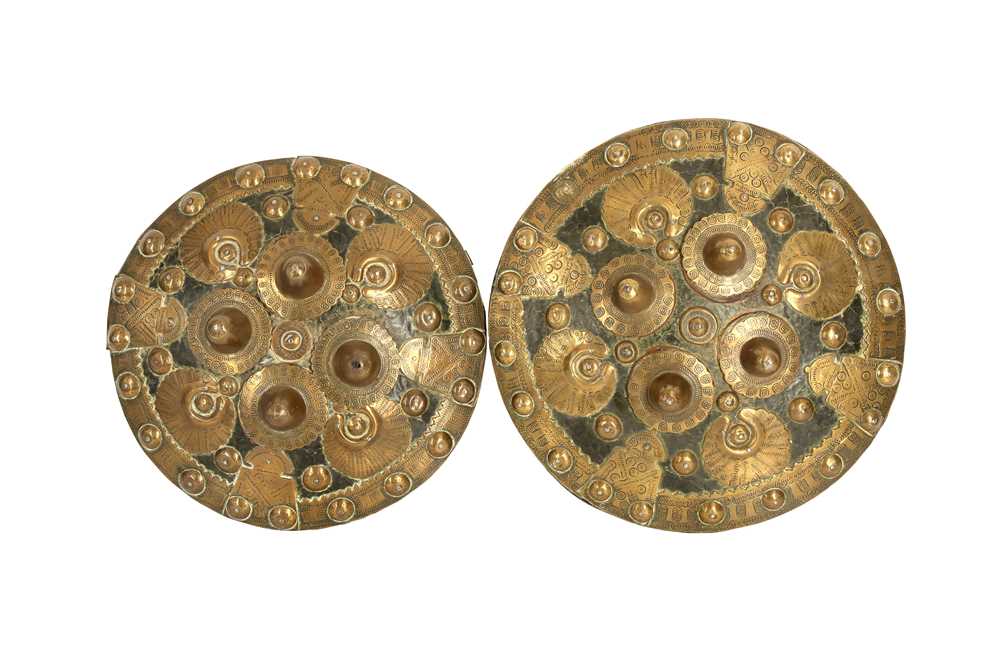

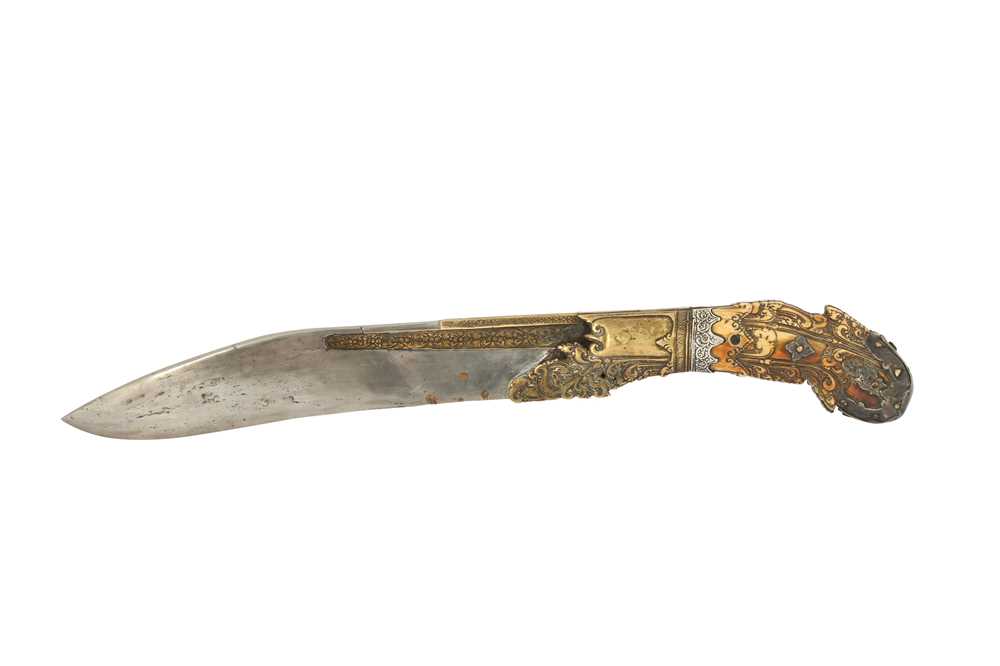
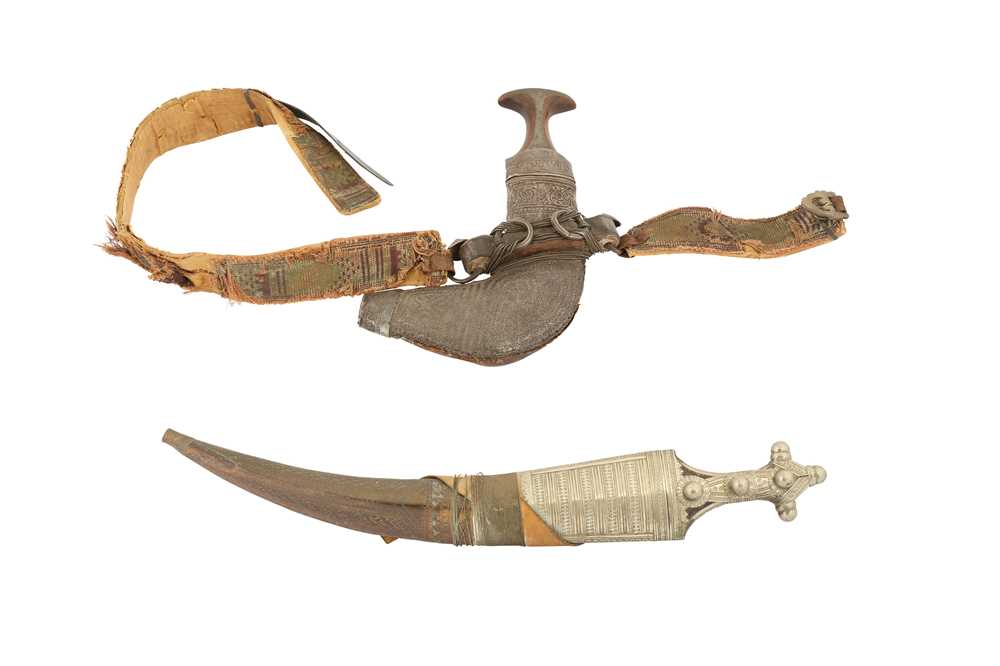



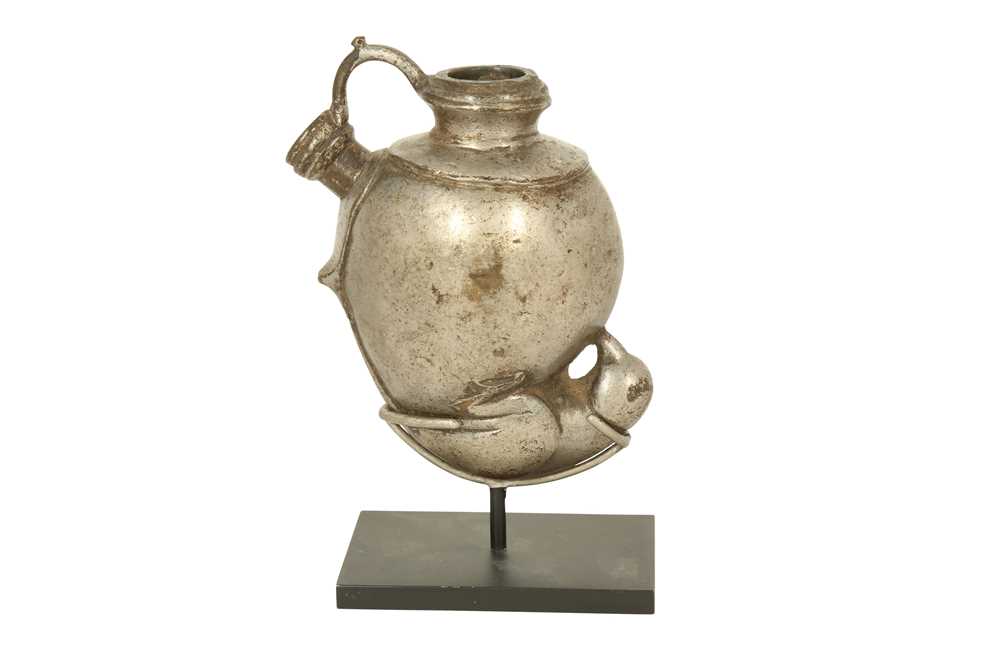

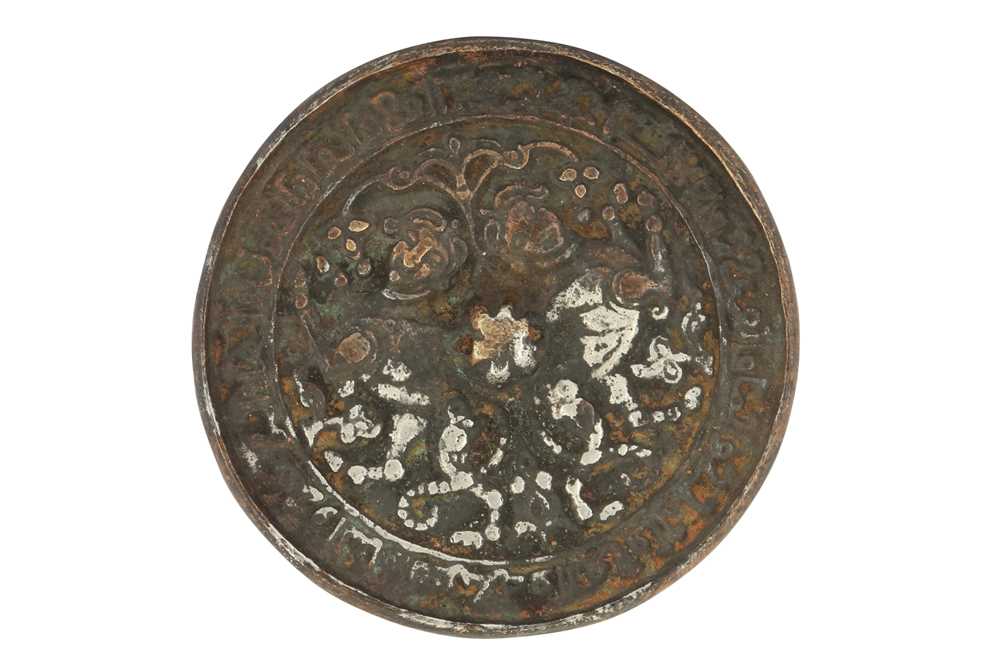
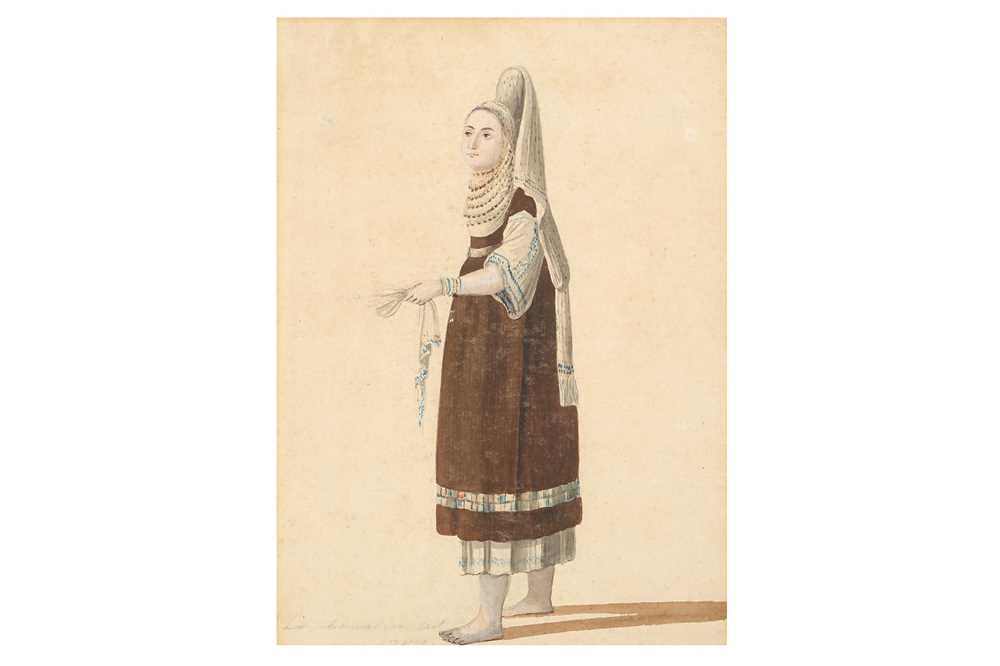
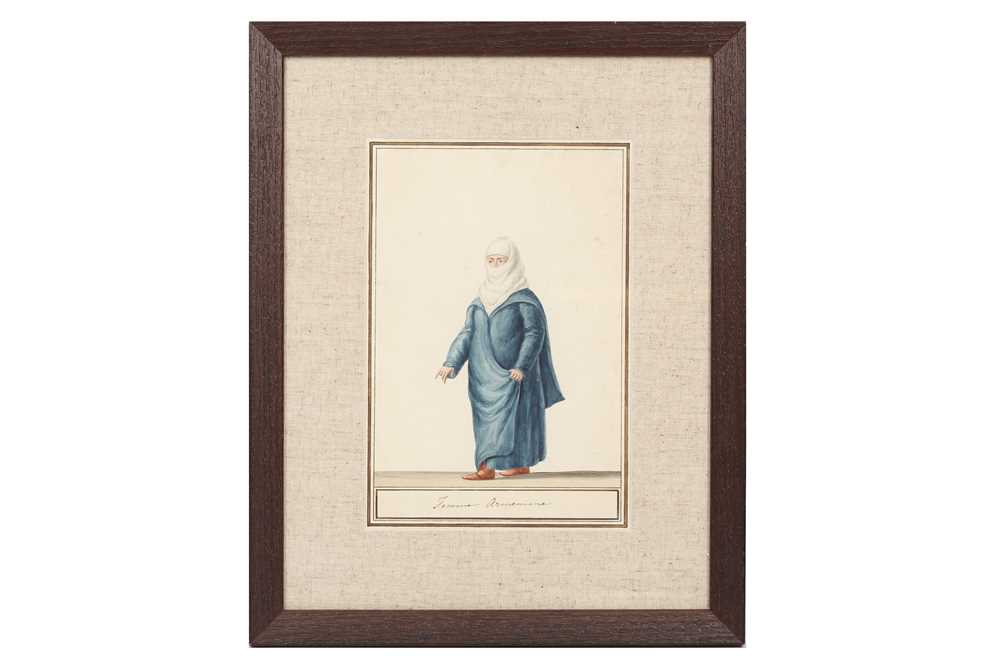
Try LotSearch and its premium features for 7 days - without any costs!
Be notified automatically about new items in upcoming auctions.
Create an alert